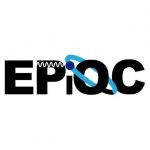Proprietary Thinking Behind Qunnect’s ‘Quantum Memory’ Technology Secures Federal Grants, Seed Funding & VC Backing

(Innovateli) A red-hot “Quantum Memory” technology has secured a seven-figure federal grant for a Stony Brook startup with plans for ultra-secure global communications.
Qunnect Inc., which leverages tech created by Stony Brook University’s Department of Physics and Astronomy and licensed from the Research Foundation for the State University of New York, has received a $1.5 million Phase-II Small Business Innovation Research award from the U.S. Department of Energy.
The proprietary thinking behind the Quantum Memory device has already landed $1 million in combined National Science Foundation grants, a $50,000 NSF Innovation Corps commercialization prize and a $50,000 SBU Discovery Prize for the Quantum Information Technology Group, managed by Qunnect cofounder and Chief Science Officer Eden Figueroa.
Late last year, the startup – based inside SBU’s Center for Excellence in Wireless and Information Technology – also closed an oversubscribed $800,000 seed-funding round, backed enthusiastically by the Accelerate NY Seed Fund, French venture-capital fund Quantonation and private investors.
The Phase-II award supports the further development of Qunnect’s Quantum Memory device – which can store, manipulate and retrieve quantum states on-demand – including integration of the device with standard fiber-based telecommunication infrastructures.
Qunnect, founded in 2017 specifically to commercialize tech created in SBU’s Quantum Information Sciences & Technology Laboratory, aims to do it all at room temperature – a complete game-changer in the world of quantum computing, which traditionally requires electron-spinning hot and long enough to melt down most facilities, without hefty investments in refrigeration and other environmental controls.
The plan: to plug the Quantum Memory device into fiber networks connecting BNL to locations in New York City. In this test, the device will basically serve as a “quantum buffer,” regulating data flow at different nodes across the network – similar to a data buffer in traditional telecom systems.
























